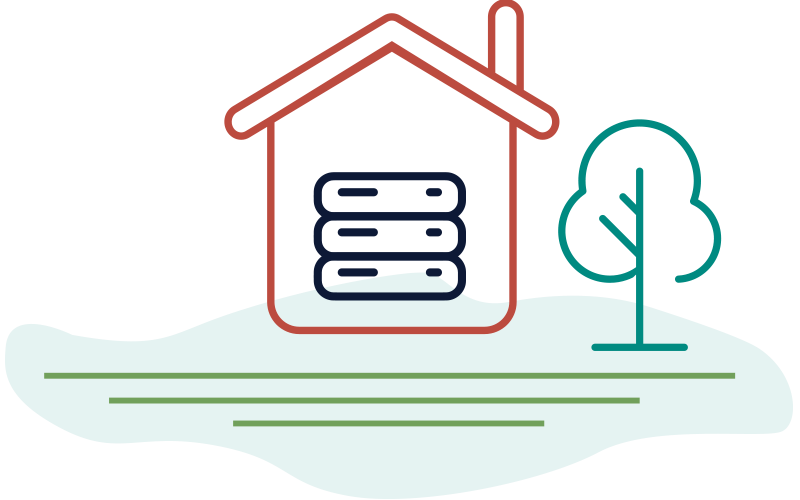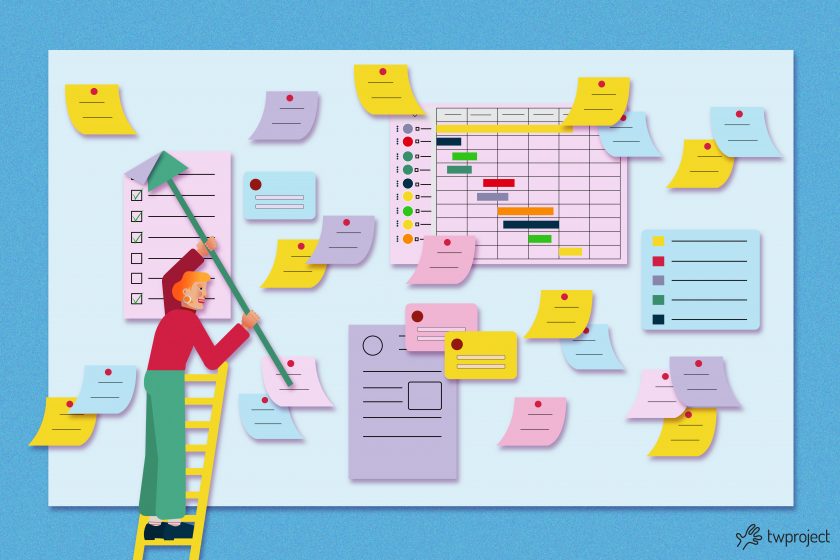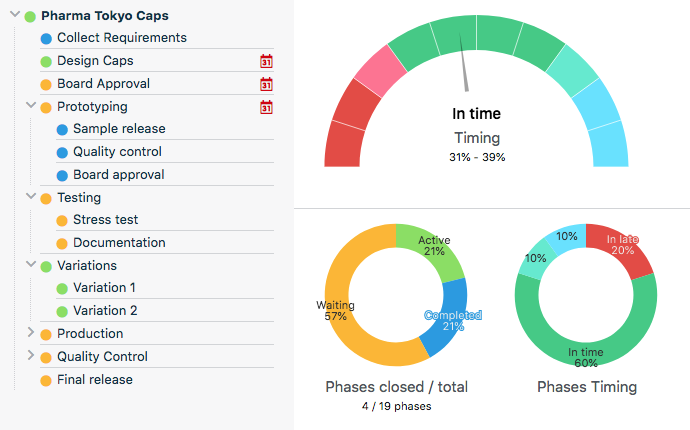-
Vulnerability in Apache Tomcat – What you need to know
On 10 March 2025, a serious vulnerability was disclosed in certain versions of the Tomcat web-server, developed by the Apache Software Foundation. This vulnerability was named CVE-2025-24813 and the Tomcat versions affected are: 9.x, from version 9.0.0-M1 to 9.0.98 10.x, from version 10.1.0-M1 to 10.1.34 11.x, from version 11.0.0-M1 to 11.0.2 Twproject, when installed via … Continue reading "Vulnerability in Apache Tomcat – What you need to know"
-
Saving time and resources with a project Template
In the age of digitisation, companies are constantly looking for ways to optimise their resources, both in terms of time and money. Among the tasks requiring great effort is the work of project planning, which requires great care and attention. Optimising this task not only means reducing the obstacles that can hinder its efficiency, but … Continue reading "Saving time and resources with a project Template"
-
Manage projects with WBS (Work Breakdown Structure)
It is much easier than you think to manage projects with WBS if you use the right tools. The WBS (Work Breakdown Structure) is a “a deliverable-oriented hierarchical decomposition of the work to be executed by the team”, at least that’s how PMBOK defines it. CONTENT How to create a project with the WBS The use of … Continue reading "Manage projects with WBS (Work Breakdown Structure)"
-
Project risk analysis
The project risk analysis or risk management, is the process of risk identification, analysis and response to any risk that occurs during the life cycle of a project. Analyzing the risks that may lie behind the execution of a project, predicting the possible obstacles and having a vision of the solutions in advance is certainly vital for any project. It … Continue reading "Project risk analysis"
-
All you need to know about Portfolio Management with Twproject
Would you like to learn more about all the methods and tools that Twproject offers you for effective and profitable portfolio management? Here you will find lots of useful information and also some tips to put into practice. CONTENT Aims and Objectives of Portfolio Management Performing good Portfolio Management with Twproject Overview of any planning … Continue reading "All you need to know about Portfolio Management with Twproject"
-
Project Life Cycle: phases and characteristics
The Project Life Cycle consists of four main phases in which the Project Manager and his team cooperate to achieve work together to achiev established objectives. The four phases that mark the life of the project are: conception / start, planning, execution / implementation and closure. Each project therefore has a beginning, a central period, a … Continue reading "Project Life Cycle: phases and characteristics"
-
Project status meetings: what to monitor to make them work!
To know the progress of the project status at any time is one of the main responsibilities of a project manager. To this end, project status meetings become a fundamental tool throughout the project life cycle. Unfortunately, however, too often, these appointments turn into a waste of time losing sight of the objectives of the … Continue reading "Project status meetings: what to monitor to make them work!"
-
How to keep project expenses in check
Keeping a project’s expenses in check is often easier said than done. Tracking expenses is becoming increasingly complex, and without the right tools and processes, meeting a project budget becomes virtually impossible. So, in this article, we will cover how to make budget management efficient. CONTENT Why is project expense monitoring important? 5 tips for … Continue reading "How to keep project expenses in check"
-
Projects and workload: what you need to know
In project management, evaluating the workload that insists over the resources shoulders plays a fundamental role for the project Happy Ending. In an ideal world where you work with infinite resources, projects are always in-time. CONTENT Duration and effort in workload: which is the difference? Project activities Routine Activities: Do you work eight hours a … Continue reading "Projects and workload: what you need to know"
-
Project monitoring: evaluation tools and methods
Project monitoring is a critical part of project management because it helps companies monitor progress, evaluate the effectiveness of efforts, and make informed decisions. This article will shed some light on this topic by discussing popular evaluation tools and methods. CONTENT What are project monitoring and evaluation? Project monitoring: how is it performed? Project monitoring: … Continue reading "Project monitoring: evaluation tools and methods"
-
The best software for Gantt chart 2024
Do you want to quickly find out which are the best Gantt chart software in 2024? We have drawn up a special list for you. The Gantt chart is the best tool to get an overview of project performance. It allows you to have the start and end dates of the project and its phases, … Continue reading "The best software for Gantt chart 2024"
-
How to manage project tracking with Twproject’s Timeline
The Timeline is a very useful tool designed to constantly track the progress of your projects. With the Project Timeline you can keep track of changes and events that have happened over time; it is in fact the historical memory of a project. CONTENT Features of the Timeline on the Statistics page Recording events on … Continue reading "How to manage project tracking with Twproject’s Timeline"
-
Gantt charts for a project: productive advantage or disadvantage?
Gantt charts for projects are the essential weapon of the Project Manager, but they can be extremely useful and effective even for anyone who wants to organize their activities in a structured way. This planning tool appeared in the early twentieth century and has since been widely used for project planning. The main reason for … Continue reading "Gantt charts for a project: productive advantage or disadvantage?"
-
Project Management 2024 Events in Italy and the World
Events 2024 in Italy and worldwide focusing on project management offer a wealth of learning and networking opportunities for professionals in this industry. In Italy, the project management sector is growing, thanks in part to the many events that offer professionals and enthusiasts the opportunity to expand their knowledge and skills. INDICE Project Management 2024 … Continue reading "Project Management 2024 Events in Italy and the World"
-
Critical Path in Project Management – How to
The Critical Path Method (CPM) is an essential algorithm in project management, used to plan a set of project activities. Its purpose is to highlight the steps involved in the longest path that determines the project end date. CONTENT How to implement the Critical Path Method Critical Path Method: a practical example Critical Path Method: … Continue reading "Critical Path in Project Management – How to"
News
Choose the category you are interested in:
AgileComparisonCost managementPm expertProduct updatesProductivityProject managementResource managementTime managementUsage tips














